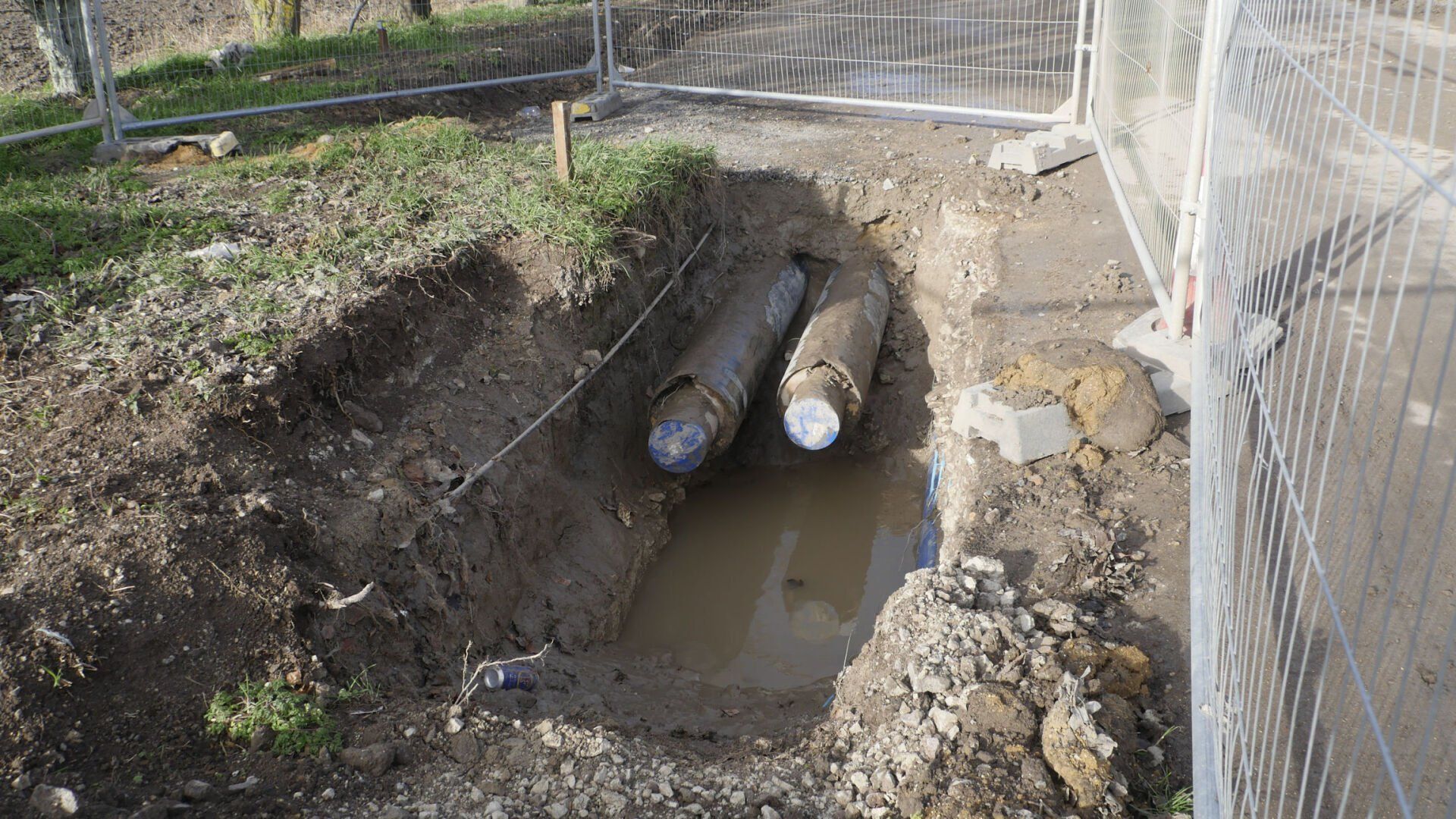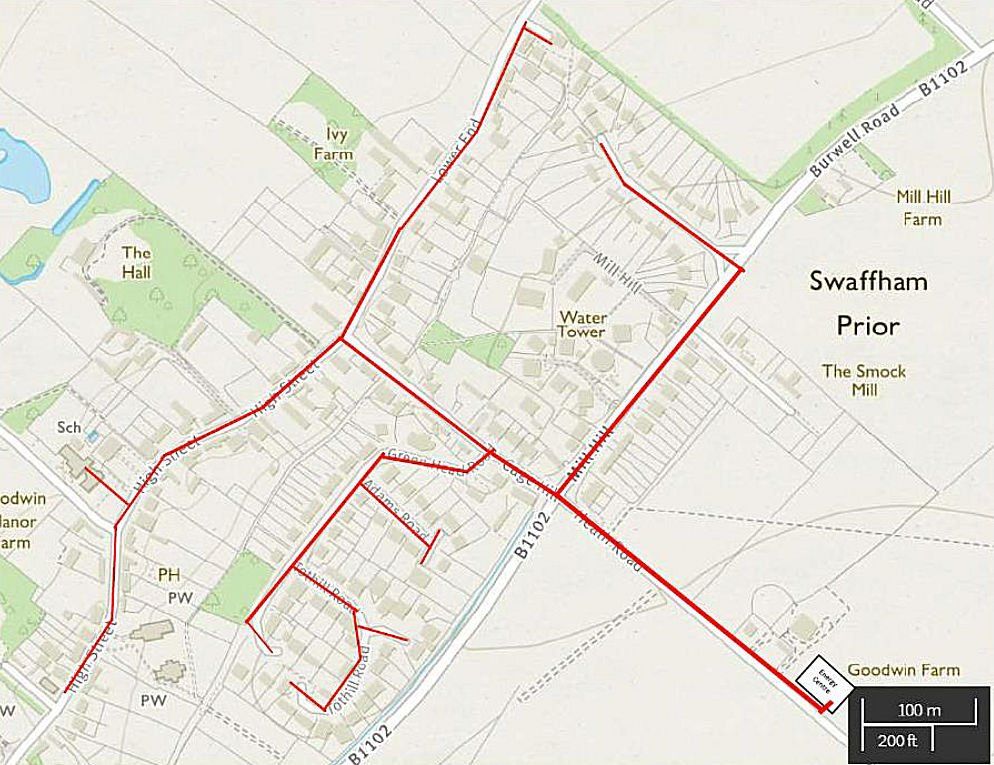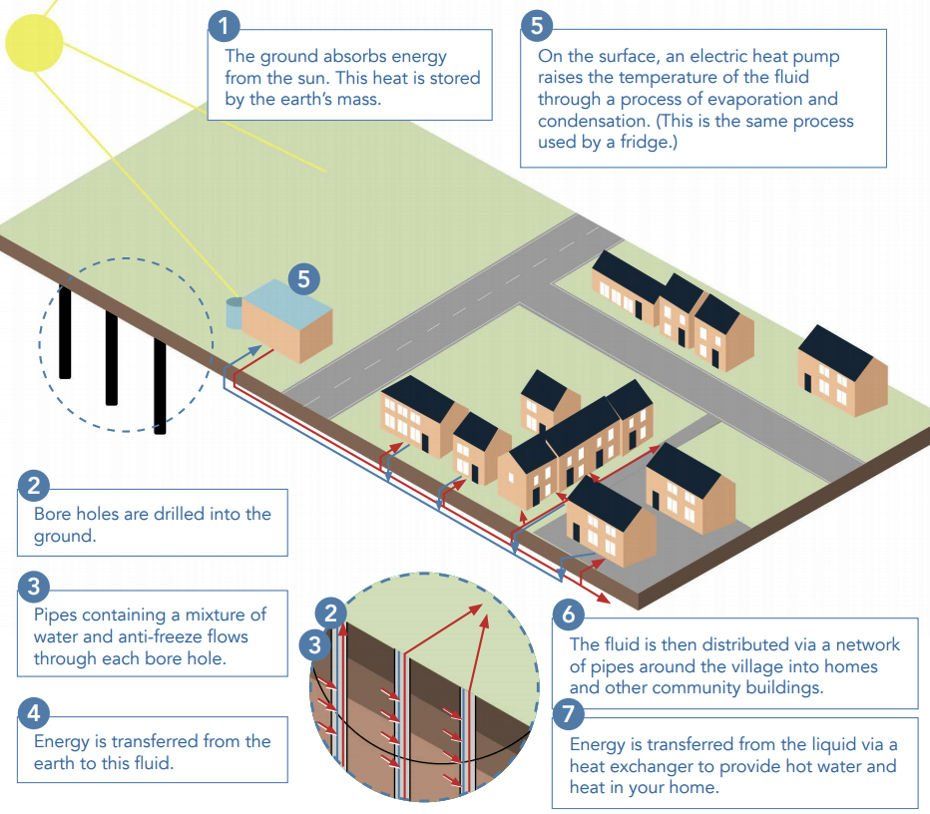Our Vision
Heating Bildeston aims to install a heat network which will provide you with heat for your hot water and radiators that is both cheaper and better for our planet. As a community project, with the support of our village, we hope to:
- Save residents money with lower cost energy.
- Avoid heating cost fluctuation by using renewable energy.
- Reduce our carbon footprint to help combat climate temperature rise.
Using heat pumps to power a village-wide heating network.
We plan to discover the most feasible solution to bring low carbon heat to village residents. Heat networks are explained here. Our current consumption can be seen here. Our current status is here.
Challenge
The ultimate project outcomes are:-
- to provide a low carbon bespoke heating solution to Bildeston village with ca. 1000 residents in order to facilitate the transition from predominantly oil-fired/LPG heating systems in this thriving Suffolk rural community.
- to improve energy efficiency of individual buildings by creating a register that enables individual property owners to adopt trusted, financially viable thermal efficiency measures.
- to create a financially robust, cost effective, reliable and sustainable supply of renewable heat energy for the present and future development of the village.
- to offer a simple and economic way for individual property owners to decarbonise their heating systems using a common template rather than each property adopting their own less effective solution.
- to boost community development and engagement by providing a community managed and owned project for the area which enables the community to enjoy the benefits of a reliable and clean source home heating.
- to build local expertise in decarbonised heating technology and scheme implementation to support and advise other similar community groups in the wider region.
Next steps....
The immediate goal to complete the feasibility study is a step on the road to achieving these outcomes. Irrespective of whether the project is able to identify an economic way forward, we believe significant benefits will accrue from raising awareness of the need to decarbonise the local community as well as giving people the access to tools to make progress now, for example, by trusted insulation advice and encouraging a cooperative approach to solution finding.
Detailed focus
The initial technology focus is on heat supply, considering ground-source (including horizontal and borehole geothermal), water-source and air-source heat pumps, as well as non-electrified options. The feasibility study will consider the viability of interconnected heat supply (centralised and decentralised generation); “phased” connection of village areas and/or development of discrete arrays (clusters of buildings); and individual, building-level solutions in situations where buildings are unable to connect to a village-wide system (e.g., due to distance or building use).
One solution...
A detailed article about the Swaffham Prior scheme is here
Heating Bildeston – where we were in April 2023
Heating Bildeston has grown to ten volunteers, all of whom are committed to finding answers to the challenges of the legally binding target of reaching net zero by 2050, the phasing-out of fossil fuel boilers by 2035, rising energy bills and accompanying fuel poverty. By coming together as a village, we want healthy warm homes that we can afford to heat while at the same time help solve the climate crisis now facing all generations to come.
Rural villages in Suffolk and the rest of the country are dependent on electricity, oil and LPG heating systems which leads them vulnerable to volatile pricing. They also have a greater numbers of older, often poorly insulated homes. Citizens Advice research has revealed the link between households being unable to access the gas grid and fuel poverty.
Many of the changes needed to decarbonise homes, for example energy efficiency retrofits and heat pumps, are currently unaffordable and disruptive for households to adopt. Without a strategic approach there is a risk that rural communities will be left behind. Ensuring electricity is cheaper than oil or gas is essential to incentivising people to switch to low carbon technologies like heat pumps and district heat networks.
There are currently concerns that the Government's green growth strategy will favour the UK’s fossil fuel industries and will miss out on key green measures, such as fitting rooftop solar to new housing and a nationwide programme for insulation of the UK’s draughty housing stock. Although the strategy includes an expansion of renewable energy, including offshore and onshore wind, essential for a green grid, it will also include plans to produce green hydrogen, which has yet to prove practicality. Electric vehicle manufacturing will be a focus, as will selling more heat pumps, but there are fears that long term heat network funding will ignore rural areas.
Heating Bildeston hopes the new Department for Energy Security and Net Zero will focus on the challenge and opportunities of reaching Net Zero but is concerned that, as is already reported, that it is not focusing on that task this year.
There has been talk of a ‘Net Zero Big Bang,’ being needed to give local authorities and communities the power to act faster on net zero. We agree, but there needs to be a better, more streamlined funding system that is easier to navigate. Heating Bildeston is grateful for the funding and assistance it has had from national government organisations such as the Rural Communities Energy Fund, (now absorbed into the Heat Network Delivery Unit, HNDU), which provided it with a grant of £33,000 to fund the feasibility phase of the project.
Heating Bildeston could be one of the local community ‘trail blazers’ and needs to move to a detailed design stage but it cannot proceed alone; it needs the support of both national and local government as well as the private sector.
The status quo is not an option. All the current pathways facing us require substantial capital and fabric-first building insulation improvement outlays. The choices we have are about who funds the spend, and on choices around collective or individual solutions, not whether to spend.
Background
Formed in response to the Climate Emergency statement announced by Suffolk County Council in 2018 with the key objective of tackling the community reliance of fossil fuels, Heating Bildeston (through Bildeston Parish Council) commissioned a report from Scene Connect on the viability of a low carbon district heating network (DHN) solution to meet the energy needs of our off-gas grid community.
The report analysed a number of different types of DHN, and concluded that such a scheme is feasible, probably based on ground sourced heat pumps supplied from common boreholes. The carbon saving would be significant, reducing carbon emissions by 90%, saving some 1,800 tonnes of CO2 emissions each year. The technology to do this is available and the geology looks to be positive.
The costs though are formidable. The capital investment required for infrastructure development is significant, in the region of £10-£12m, or a minimum of £20k per property. A financial model was constructed assuming that the scheme supplied energy at the then current cost of oil (90p/l). On the basis of some favourable assumptions, including 100% take up rate across the village, the model indicated possible breakeven in some 40 years’ time.
Current Position
A community interest company (HBCIC) has been formed to be the initial vehicle for developing the proposition further.
The HBCIC team have done some further financial analysis, including exploring additional options using distributed Ground Source Heat Pumps (GSHPs) not considered by Scene. A separate paper has been produced on financial viability, comparing the different DHN options with the existing position. This did not result in a materially improved financial perspective.
In addition, the RCEF has now been disbanded, and HBCIC no longer has the financial support required to take this project to its next stage. Second stage (detailed project development) funding of around £100-£150k will be required. HNDU has indicated that some part funding could be available for the second stage, possibly up to two thirds of what is required, but there will need to be matched funding from elsewhere. SCC has recently stated that at the moment it is unable to support second stage funding.
In order to find further significant funds we will need to construct a business plan showing potential for financial viability, which under current conditions is very difficult.
Key Issues
Infrastructure costs
Current indicated costs of at least £20k per house are prohibitive if funded privately. These are higher if we get lower take-up rates. If we are seeking universal acceptance in the village, these costs need to come down significantly. It is doubtful that some sort of loan scheme to cover all, or even a proportion of these costs, would be attractive or desirable. Ultimately these costs need to be significantly reduced, and the balance funded by grants from public bodies.
Electricity costs
These will be the primary ongoing cost for any heat pump based scheme. Currently they are extremely high, although the financial analysis done so far has assumed that they will revert immediately to historically much lower levels. Not only is there no sign of this happening soon, even if it did there is every possibility that another seismic event would occur. The basic problem is that electricity prices are based on the marginal cost of the most expensive element - usually gas. This is hugely ironic given that increasingly energy supplies are sourced from renewables which have a much lower production cost - once the infrastructure is in place.
Take-up rates
Given the size of the infrastructure development, it is crucial that of those with central heating that take-up is as close to 100% as possible (to share the cost). There is no evidence we are anywhere near that, and it is clear that, short of compulsion, the key deciding factor for the majority of people will be cost. Until sufficient people are energised by the climate emergency alone, a compelling financial argument is required.
Other technologies
The Feasibility study did not look at energy alternatives such as wind, solar etc. These might be particularly helpful in addressing the cost of electricity issue.
Risk management
No formal risk analysis has so far been done. When it is done it will undoubtedly show that there is a significant chance of various adverse events crippling the finances of any local scheme. There will need to be a mechanism for underwriting future losses.
Government support
A sovereign government which issues its own currency has the power to create as much money as required to undertake any socially desirable activity. As long as the resources (materials, skills, etc) are available money never needs to be a limiting factor. To be clear, for government this is a political decision, not a financial one. For everyone else, including businesses, local government, and individuals, it is a financial decision.
What Can We Do Now?
Strategic options
We need to engage with experts to -
- further detail infrastructure costs,
- explore alternative energy sources to reduce electricity costs,
- look at network sizes, proportional to the number of users, and the implications,
- find ways of implementing retrofit insulation schemes.
Lobby government
For initiatives like this to succeed, a much more supportive government is required. Local government is heavily financially constrained, the key determinant is central government. The reality of a climate emergency is here and needs to be recognised. Local initiatives can thrive if they have access to a meaningful and long term grant scheme potentially funding 100% of infrastructure costs. Action is also needed on energy market pricing.
Conclusion
Heating Bildeston’s original intention was to seek second stage funding from RCEF of some £100-150k to fully develop all aspects of the project, short of actual spades in the ground. This is no longer available. In any case, we do need to address the key issues raised before we can claim to have a proposal that looks financially viable.
The uncertainties of governmental political commitment, energy market pricing and funding sources create too many unknowns at the moment to properly assess scheme design, infrastructure possibilities, and financially attractive options. Yet we need to keep pressing forward as the climate crisis is only worsening. In the short term we should investigate further the strategic options raised above, ready to develop and implement a full second stage (a detailed project plan including securing full funding) and do all we to help reduce current energy use, both to help those in need and to help make the village heating load more manageable.
Details of our first feasibility study, completed in 2023, are here -








